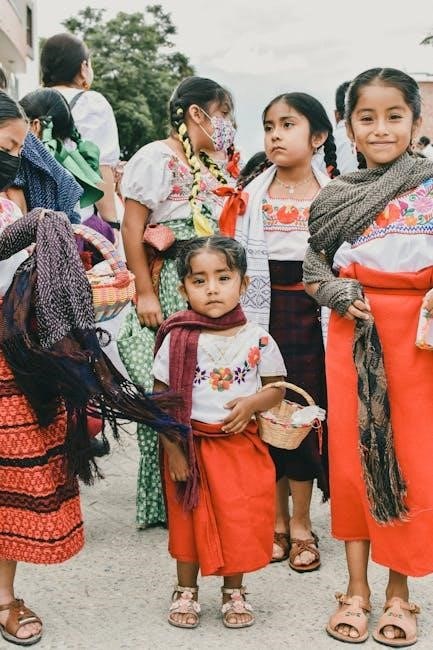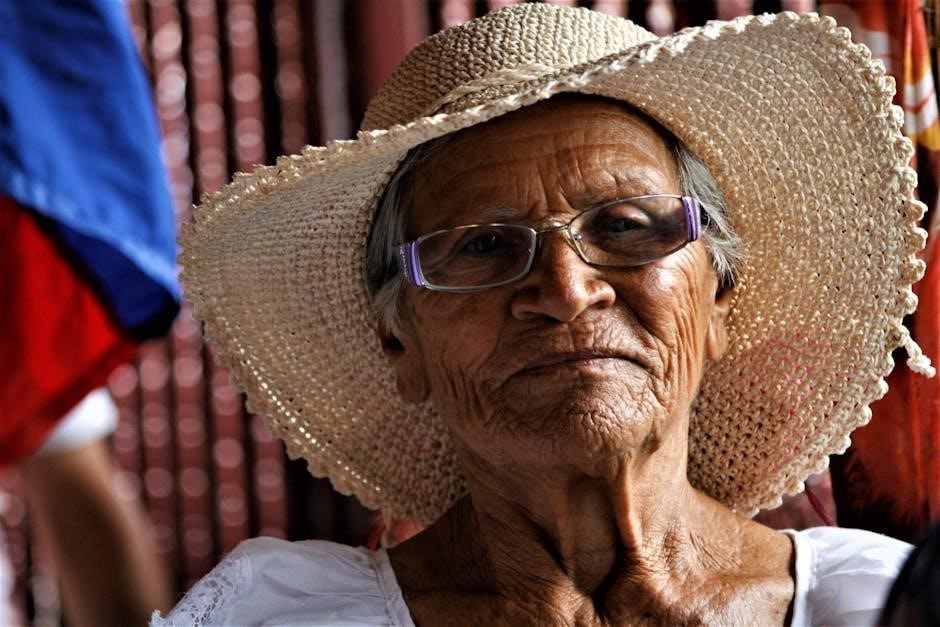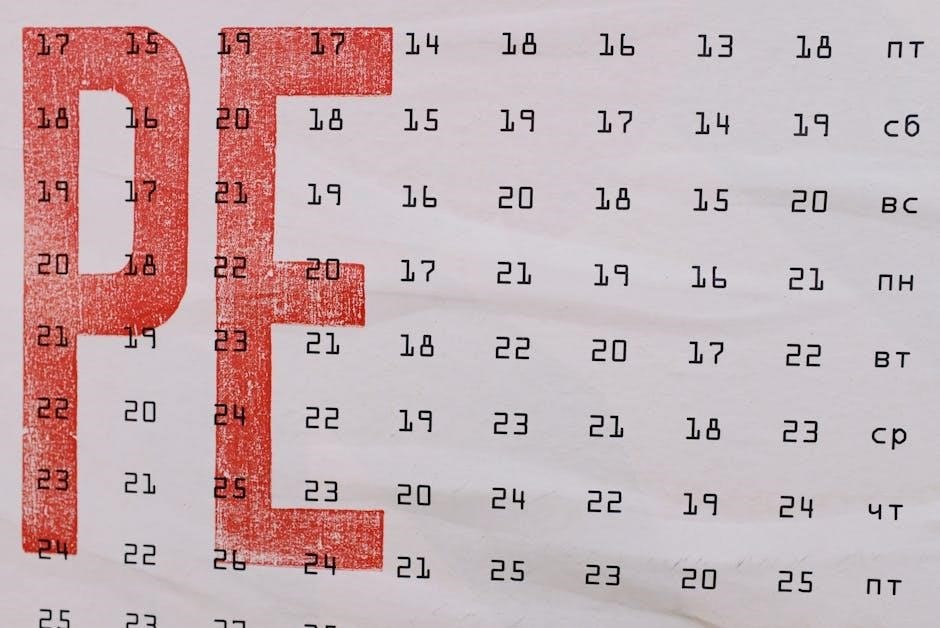Hispanic Heritage Month: Lesson Plans & Activities
Get ready to celebrate Hispanic Heritage Month! This guide provides lesson plans and activities to help students explore Hispanic culture. Discover creative ways to engage students in learning about history, traditions, and contributions. Integrate activities to promote inclusion, acceptance, and tolerance in the classroom while celebrating the rich heritage.
What is Hispanic Heritage Month?

Hispanic Heritage Month is a period dedicated to celebrating the rich culture, history, and invaluable contributions of Hispanic Americans to the United States. It’s a time to honor the achievements of individuals with ancestry tracing back to Spain, Mexico, Central and South America, and the Caribbean.
This month-long celebration provides an opportunity to delve into the diverse traditions, languages, arts, music, and literature that have enriched American society. It acknowledges the profound impact of Hispanic individuals in various fields, including science, arts, politics, sports, and business.
Hispanic Heritage Month also serves as a platform to promote inclusivity, understanding, and appreciation for the diverse cultural tapestry of the United States. It is a chance to recognize the ongoing struggles and triumphs of the Hispanic community while fostering a sense of unity and respect among all Americans.
Through educational programs, community events, and cultural activities, Hispanic Heritage Month aims to raise awareness about the historical significance and contemporary relevance of Hispanic culture in American society. Ultimately, it’s about fostering a deeper understanding and appreciation for the rich tapestry of cultures that make the United States so unique and vibrant.
Dates and Significance of Hispanic Heritage Month

Hispanic Heritage Month is observed annually from September 15th to October 15th in the United States. The timing is significant, as it coincides with the independence anniversaries of several Latin American countries. Costa Rica, El Salvador, Guatemala, Honduras, and Nicaragua all celebrate their independence on September 15th.
Furthermore, Mexico celebrates its independence on September 16th, and Chile on September 18th. The selection of this period allows for the recognition of multiple independence days within a single month-long celebration, highlighting the shared heritage and historical ties of many Hispanic nations.
The significance of Hispanic Heritage Month lies in its ability to promote awareness and appreciation for the contributions of Hispanic Americans to the United States. It provides a platform to showcase the rich cultural traditions, languages, and histories of the Hispanic community. Moreover, it serves as a reminder of the ongoing struggle for equality and representation faced by Hispanic Americans throughout history.

By celebrating Hispanic Heritage Month, we acknowledge the vital role that Hispanic individuals have played in shaping American society and enriching its cultural landscape. It’s an opportunity to foster understanding, inclusivity, and respect for the diverse backgrounds and experiences of all Americans.
Importance of Celebrating Hispanic Heritage in Schools
Celebrating Hispanic Heritage Month in schools holds immense importance for fostering inclusivity and enriching the educational experience for all students. With Hispanic students comprising a significant portion of the student population, particularly in elementary schools, recognizing and celebrating their heritage is crucial for creating a welcoming and supportive learning environment.
By incorporating Hispanic culture, history, and contributions into the curriculum, schools can provide Hispanic students with a sense of belonging and pride in their identity. This representation not only validates their experiences but also encourages them to engage more actively in their education.
Furthermore, celebrating Hispanic Heritage Month offers all students the opportunity to learn about different cultures and perspectives. It promotes cross-cultural understanding and empathy, which are essential skills for navigating an increasingly diverse world. Through exposure to Hispanic art, literature, music, and traditions, students can develop a broader worldview and appreciate the richness of human diversity.
Moreover, celebrating Hispanic Heritage Month can help combat stereotypes and misconceptions about the Hispanic community. By highlighting the achievements and contributions of Hispanic individuals throughout history, schools can challenge negative stereotypes and promote a more accurate and nuanced understanding of Hispanic culture. This, in turn, can contribute to a more inclusive and equitable society.
Activities: Exploring Spanish-Speaking Countries
Engage students in exciting activities that explore the diverse tapestry of Spanish-speaking countries, fostering a deeper understanding of their cultures, geography, and traditions. Embark on a virtual journey by selecting a country for the entire class or assigning different countries to small groups, encouraging collaborative learning and exploration.
For younger students, spark creativity by having them draw the country’s flag, capturing its symbolism and colors. Older students can create detailed maps showcasing major cities, landmarks, and geographical features, enhancing their spatial reasoning skills.
Organize an internet scavenger hunt, challenging students to unearth fascinating facts about each country, such as its capital city, population, government structure, and primary industries. This activity promotes research skills and critical thinking;
Encourage practical application of knowledge by tasking students with planning a virtual trip to their assigned country. They can research must-see sites, transportation options, and accommodation choices, enhancing their planning and problem-solving abilities. To integrate math skills, have them calculate the estimated cost of the trip, fostering financial literacy.
These activities provide a dynamic and interactive way for students to delve into the rich cultures of Spanish-speaking countries, fostering a global perspective and appreciation for diversity.
Virtual Field Trips to Hispanic Cultural Sites
Immerse your students in the vibrant world of Hispanic culture through captivating virtual field trips to iconic landmarks and cultural sites. Bring history and art to life by exploring renowned museums and historical locations from the comfort of your classroom.
Embark on a virtual tour of the National Museum of the American Latino, delving into the rich history and contributions of Latinos in the United States. Discover artifacts, exhibits, and stories that illuminate the diverse experiences of this community.
Step into the world of Frida Kahlo with a virtual visit to Casa Azul, her iconic home in Mexico City. Explore the vibrant colors, unique architecture, and personal artifacts that shaped her artistic vision.
Utilize Google Earth to embark on a virtual exploration of historical sites across the Hispanic world. Journey to Machu Picchu in Peru, marveling at the ancient Inca citadel nestled high in the Andes Mountains. Explore the San Juan National Historic Site in Puerto Rico, witnessing the fortifications that protected the island for centuries.
Visit the Salinas Pueblo Missions National Monument in New Mexico, learning about the interaction between Spanish missionaries and Native American communities. Conclude your virtual journey at the Freedom Tower in Miami, Florida, a symbol of hope and freedom for Cuban refugees.
Research Projects on Influential Hispanic Figures
Inspire your students by delving into the lives and accomplishments of influential Hispanic figures who have shaped history, culture, and society. Encourage them to explore the stories of individuals who have made significant contributions in various fields, from arts and literature to science and politics.
Assign each student to select a Hispanic figure who resonates with them and conduct in-depth research on their life, work, and impact. Encourage students to explore primary and secondary sources, including biographies, articles, and documentaries, to gain a comprehensive understanding of their chosen figure.
Once their research is complete, challenge students to present their findings in a creative and engaging manner. They could create a poster highlighting key achievements, design an infographic showcasing important facts, write a song celebrating their figure’s legacy, or deliver an oral presentation sharing their insights.
Encourage students to think critically about the challenges and triumphs faced by their chosen figure, and to reflect on the lessons that can be learned from their experiences. By engaging with these stories, students can develop a deeper appreciation for the diversity and richness of Hispanic heritage.
Provide a list of updated and current celebrities for students to choose from, ensuring that they have access to a wide range of inspiring role models.
Literature: Books Celebrating Hispanic Culture
Expand your classroom library with a diverse collection of books that celebrate Hispanic culture, traditions, and experiences. These books can serve as windows into different worlds, allowing students to explore the richness and complexity of Hispanic heritage through engaging narratives and vibrant illustrations.
Introduce students to a variety of genres, including picture books, chapter books, and novels, that feature Hispanic characters, settings, and themes. Select books that showcase the diversity of Hispanic cultures, representing different countries, regions, and communities.
Encourage students to explore themes of identity, family, community, and resilience through the stories they read. Facilitate discussions about the challenges and triumphs faced by Hispanic characters, and help students connect these stories to their own lives and experiences.
Incorporate award-winning books, such as those recognized by the Pura Belpré Award, which honors Latino authors and illustrators whose work best portrays, affirms, and celebrates the Latino cultural experience. These books offer exceptional examples of storytelling and artistic expression.
Consider reading books in both English and Spanish to promote language learning and cultural understanding. Use the illustrations to help students guess the meaning of unfamiliar words and phrases. Explore stories with themes related to family, community, and cultural pride.
Guest Speakers: Connecting with the Local Community
Invite guest speakers from the local community to share their experiences and perspectives on Hispanic culture. This provides students with opportunities to connect with real-life role models and gain firsthand insights into the richness and diversity of Hispanic heritage.
Reach out to local leaders, business owners, artists, and community activists who identify as Hispanic or have expertise in Hispanic culture. Encourage them to share their personal stories, family traditions, and contributions to the community.
Prepare students for the guest speaker’s visit by researching their background and accomplishments. Brainstorm questions to ask the speaker about their experiences, challenges, and successes. Encourage students to actively listen and take notes during the presentation.
During the Q&A session, facilitate a respectful and engaging dialogue between the students and the guest speaker. Encourage students to ask thoughtful questions that demonstrate their curiosity and interest in learning more about Hispanic culture.
After the guest speaker’s visit, have students reflect on what they learned and how it impacted their understanding of Hispanic heritage. Encourage them to write thank-you notes to the speaker expressing their appreciation and highlighting key takeaways from the presentation. Use insights gained as part of a class project.

Music and Dance: Exploring Latin Rhythms
Immerse your students in the vibrant world of Latin music and dance, showcasing how Hispanic Americans have enriched our nation’s culture. From the infectious rhythms of salsa to the soulful melodies of mariachi, Latin music offers a unique and captivating experience.
Introduce students to a variety of Latin musical genres, exploring their origins, cultural significance, and key characteristics. Discuss the instruments commonly used in Latin music, such as the guitar, trumpet, percussion instruments, and accordion. Play recordings of famous Latin musicians and encourage students to identify the different instruments and rhythms.
Teach your class a simple Spanish song with accompanying movements and visuals to aid in memorization. Explore music from different Latin American countries and encourage students to identify the distinctions. Turn it into a game where they guess the instruments being played.
Introduce students to popular Latin dances, such as salsa, merengue, bachata, and cumbia. Demonstrate basic steps and encourage students to participate in a fun and interactive dance lesson. Discuss the cultural context of each dance and its significance within Hispanic communities. This will engage their whole body in learning.
Games and Crafts: Hands-on Cultural Experiences
Engage students in hands-on cultural experiences through traditional Hispanic games and crafts, fostering a deeper appreciation for the diverse cultures within the Hispanic community. Introduce a traditional Hispanic game to show them how different cultures have fun. Consider games like “Lotería,” a Latin American version of bingo, using pictures instead of numbers to enhance engagement.
Play “Mar y Tierra,” a game similar to Simon Says, where students jump to designated sides representing the sea and land, promoting quick thinking and concentration. Engage students in “Los Numeros,” a math-based game where they form groups according to numbers called out in Spanish, reinforcing language skills and teamwork.
For a creative craft activity, introduce “Papel Picado,” the art of creating intricate paper cuttings used to decorate streets during special occasions like Día de Muertos. Provide students with colorful tissue paper and templates to design their own “Papel Picado” banners, fostering artistic expression and cultural awareness.
Explore “Luminarias,” traditional paper lanterns made during Christmastime, by having students decorate paper bags with stencils and hole punchers, creating festive and personalized lanterns. These activities provide a hands-on approach to understanding and celebrating Hispanic traditions.
